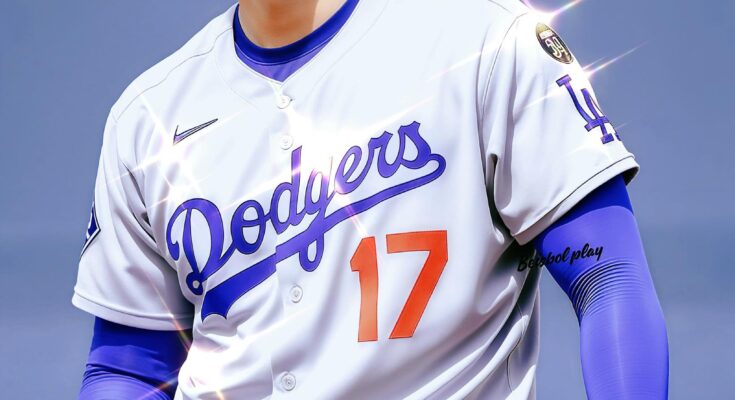Shohei Ohtani Has Already Reached 102 mph Again; The Japanese Phenomenon’s Remarkable Recovery and What Lies Ahead
Shohei Ohtani, the dual-threat Japanese baseball superstar, has once again stunned the baseball world by reaching a pitching velocity of 102 miles per hour. This feat alone is remarkable, but it is even more impressive when viewed in the context of Ohtani’s recent injury history, recovery process, and the demands placed upon him as a two-way player in Major League Baseball (MLB). His ability to regain such elite velocity not only highlights his exceptional physical and mental resilience but also positions him as an open candidate for teams worldwide, especially as contract negotiations, trade talks, and roster decisions come into focus.
In this detailed analysis, we will explore Shohei Ohtani’s journey, the significance of his recent velocity milestone, how it reflects the broader context of Japanese baseball development, and what implications it holds for Ohtani’s career trajectory and MLB’s landscape in the near future.
To fully appreciate the significance of Ohtani’s recovery and velocity resurgence, it is essential to understand who he is and why he matters so much to baseball globally.
Shohei Ohtani first emerged on the international stage as a teenage prodigy in Japan’s Nippon Professional Baseball (NPB) league. His combination of blazing fastballs, devastating breaking pitches, and offensive prowess was rare—so rare that he was often compared to legendary two-way players like Babe Ruth. Unlike most players who specialize either as pitchers or hitters, Ohtani excels in both roles at an elite level.
When Ohtani joined MLB’s Los Angeles Angels in 2018, he immediately captured fans’ imagination. In his rookie season, he hit 22 home runs and pitched with triple-digit velocity, displaying raw power and skill. Over the years, he has continued to develop, breaking records and winning awards, including the American League MVP in 2021.
Ohtani is not just a player; he is a phenomenon whose success has inspired fans across Japan, the United States, and the baseball world at large.
Like many pitchers who throw at extreme velocities, Ohtani has faced injuries, including a significant elbow issue that required Tommy John surgery in late 2018. Tommy John surgery, a procedure to reconstruct the ulnar collateral ligament (UCL) in the elbow, is notorious among pitchers and demands a long rehabilitation period—often over a year.
What makes Ohtani’s journey unique is that he underwent Tommy John surgery relatively early in his MLB career, right after his rookie season. Many feared that such a surgery might permanently limit his pitching ability or even end his career as a two-way player. However, Ohtani’s commitment to recovery and rehabilitation was unwavering.
By the 2021 season, Ohtani had returned not only as a capable pitcher but as one of the most electrifying players in the league, showcasing a velocity that routinely topped 100 mph. This comeback was a testament to advances in sports medicine, diligent rehab protocols, and Ohtani’s own determination.
Fast forward to today, and Ohtani’s recent achievement of reaching 102 mph again in his pitching is a significant milestone. Pitching at such a high velocity is physically demanding, placing tremendous stress on the arm and body. Maintaining or regaining this velocity after surgery and a heavy workload as a hitter and pitcher speaks volumes about Ohtani’s conditioning and medical care.
Why is velocity so important? In baseball, velocity directly correlates with a pitcher’s ability to dominate hitters. A fastball clocked at 102 mph leaves batters less time to react, increasing the likelihood of swings and misses or weak contact. Velocity, combined with pitch movement and control, makes a pitcher truly elite.
Ohtani’s velocity recovery suggests several key points:
- Physical Resilience: Ohtani’s arm has healed exceptionally well. The ability to throw at such high speeds indicates that the ligament reconstruction is solid and that his mechanics have not been compromised.
- Training and Conditioning: It reflects a top-tier training regimen focused not only on strength but on flexibility, recovery, and injury prevention.
- Mental Toughness: Returning to such velocity after an injury requires confidence and mental fortitude. Many pitchers hesitate or alter mechanics post-injury to avoid pain or re-injury, but Ohtani’s velocity shows he is fully confident.
- Team Support: The Angels’ medical and coaching staff have played a critical role in managing his workload and recovery protocols.
The story of Shohei Ohtani is also a story about Japanese baseball’s remarkable development system. Japan has long been a powerhouse in developing world-class baseball talent, emphasizing fundamentals, discipline, and a team-oriented approach. Players like Ohtani are a product of years of rigorous training from a young age.
Japanese players often enter MLB with a strong foundation in fundamentals, a work ethic that impresses coaches and fans, and the ability to adapt to high-pressure environments. Ohtani’s ability to perform at the highest level as a pitcher and hitter embodies these qualities.
Moreover, Japan’s baseball culture places a premium on resilience and recovery. The nation’s approach to rehabilitation is thorough and science-based, enabling athletes like Ohtani to bounce back from injuries that might derail others.
Given Ohtani’s elite status, durability, and recent velocity milestone, he is inevitably an open candidate for teams seeking a franchise cornerstone. In the context of MLB’s evolving free agency market, Ohtani’s value cannot be overstated.
Currently, Ohtani is under contract with the Los Angeles Angels, but as he approaches free agency or contract renewal periods, his status as an open candidate becomes critical. Several factors shape this scenario:
- Two-Way Player Rarity: Ohtani’s unique ability to contribute as both a starting pitcher and a top-tier hitter makes him an invaluable asset. Few players can match his production on both sides.
- Market Demand: Teams in rebuilding phases or those looking for a superstar to elevate their franchise will consider Ohtani a prime target.
- Contract Negotiations: Ohtani’s camp is well aware of his unique market value. Negotiations will likely reflect his dual role, requiring creative contract structures.
- Health Concerns: Despite his recent velocity and health, teams will factor in his injury history and workload in contract offers.
- Brand and Commercial Impact: Beyond on-field performance, Ohtani’s global appeal, especially in the U.S. and Japan, enhances his marketability.
Given these dynamics, Ohtani will have multiple suitors and a strong negotiating position. His decision could influence MLB’s competitive balance, media coverage, and fan engagement.
While Ohtani’s velocity and recovery are cause for celebration, challenges remain. Managing the workload of a two-way player is complex. Pitching at over 100 mph multiple times a game while maintaining offensive production demands unparalleled conditioning.
Teams will have to carefully monitor pitch counts, rest days, and training to avoid overuse injuries. Advances in sports science, wearable technology, and data analytics will be critical in optimizing Ohtani’s performance and longevity.
Furthermore, expectations from fans, media, and teammates add pressure. Ohtani is not just a player; he is a symbol of hope and excitement for baseball. Balancing these expectations with physical and mental health will be key.
Shohei Ohtani’s resurgence and velocity milestone resonate beyond his personal career. He is redefining what is possible in modern baseball and inspiring a new generation of athletes to pursue dual roles.
If Ohtani continues to perform at this level, MLB may see an increased emphasis on developing two-way players, challenging traditional norms of specialization.
His success also strengthens the baseball relationship between Japan and the U.S., encouraging scouting, collaboration, and cultural exchange.
Shohei Ohtani’s achievement of reaching 102 mph once again after surgery and intense workload is a remarkable testament to his talent, resilience, and the excellence of Japanese baseball training and rehabilitation. It signals that he remains among the most dominant pitchers in the game while continuing to electrify as a hitter.
As Ohtani becomes an open candidate in the free agency market or contract negotiations, his unique skill set makes him one of the most sought-after players globally. His decisions will shape the future of baseball, influence team strategies, and inspire millions.
While challenges remain in managing his health and expectations, Ohtani’s journey epitomizes the spirit of perseverance and excellence. His story continues to unfold as one of the greatest narratives in sports today, and the baseball world watches eagerly to see what comes next.



